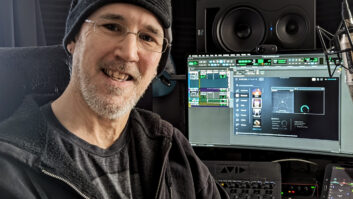LAS VEGAS — In 1981 video killed the radio star, or so said the one-hit wonders The Buggles in the first video to air on the then-new cable channel MTV. Intel president/CEO Paul Otellini evoked the same feelings as a new version of the song was used to introduce his keynote speech here at International CES.
“After that video, the music industry was never the same,” said Otellini, “The audio experience now became the visual experience via television. And the music video became as important as the song itself.”
Otellini highlighted how the Internet will continue to disrupt the consumer electronics and entertainment industries in new ways. “We’re now in the midst of the largest opportunity to redefine consumer electronics and entertainment since the introduction of the television,” Otellini said.
“Increasingly, computing and communications are coming together, bringing a new level of capabilities and intelligence to the Internet experience. The personal Internet of tomorrow will serve you — delivering the information you want, when you want it, how you want, wherever you are.”
To emphasize these changes Otellini was joined onstage by Steve Harwell, lead singer of the band Smash Mouth, to demonstrate a personal Internet that will enable more natural social interaction, such as allowing musicians to jam together even when they are in different locations. They also showed what could be a possible 3-D world of the future using life-like photo-realistic avatars.
During his keynote Otellini used Vegas “magic” to go on a global trek, heading to China in time for the 2008 Summer Olympics in Beijing, where he showcased a pocket-sized mobile Internet device, which could include audibly and visually conduct of building signs, menus and even conversations in real time, as well as provide GPS directions with step-by-step visual cues of landmarks.
“Doing things like real-time translation, augmented reality, making real-time use of these huge video databases will require exponentially more powerful processors that are also more exponentially using less and less power,” said Otellini.
He said that’s what he believes Intel will deliver in the next three to five years But to do so Intel will need to overcome a series of obstacles, said Otellini, including the need for microprocessors to be more efficient and more powerful, the need for ubiquitous wireless broadband infrastructure, better Internet context and finally a much more natural user interfaces.
“Each obstacle in of itself is a challenge, but together they are very daunting. At Intel we like challenges and we’re working hard at solutions.” Otellini said that this wouldn’t be a task that Intel would take on alone, adding that the smartest minds from multiple industries would need to work together to create the “personal Internet.”
“As Intel CEO I’m proud to say that Intel has led the silicon industry into the nanoworld,” said Otellini, while describing the new functions available in a single chip, and the business opportunities for the CE companies. Otellini demonstrated Intel’s first Intel Architecture-based system-on-a-chip product optimized for a new generation of set-top boxes, media players and TVs. Codenamed “Canmore,” the Internet system will be available in the second half of the year and will pair a PC-class processor core with leading-edge, A/V processing that can play 1080p video with 7.1 surround sound.













